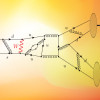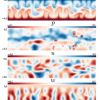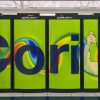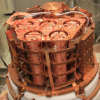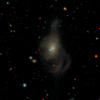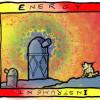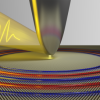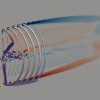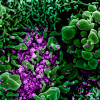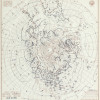Science News
Novel Calculation Sheds New Light on Matter/Anti-Matter Mystery
An international collaboration of theoretical physicists has published a novel calculation that provides new insights into the relationship between matter and antimatter in the universe. This work included extensive use of NERSC supercomputing resources over six years. Read More »
Deep-Learning Research Nominated for Best Student Paper Award at SC20
A paper describing MeshfreeFlowNet — an open-source, physics-constrained, deep-learning approach for simultaneously enhancing the spatial and temporal resolution of scientific data — is a finalist for the Best Student Paper Award at SC20.“MeshfreeFlowNet is a big step forward in terms of physics-constrained machine learning algorithm development, combining important criteria necessary for scientific data: physics-based partial differential equation constraints, a mesh-free design that… Read More »
NERSC Supports COVID-19 Pandemic Response
Since April 2020, NERSC has allotted 2.5 million node hours on its Cori supercomputer and has provided dedicated HPC staff liaisons and other resources to support COVID-19 research. Read More »
Physical Scientists Turn to Deep Learning to Improve Earth Systems Modeling
The role of deep learning in science is at a turning point, with weather, climate, and Earth systems modeling emerging as an exciting application area for physics-informed deep learning. In this Q&A, NERSC's Karthik Kashinath discusses what is driving the scientific community to embrace these new methodologies. Read More »
NERSC Resources Play Key Role in CUPID-Mo Collaboration
Nuclear physicists affiliated with the U.S. Department of Energy’s Lawrence Berkeley National Laboratory (Berkeley Lab) played a leading role in analyzing data for a demonstration experiment that has achieved record precision for a specialized detector material. The data-analysis component of this ground-breaking research was conducted entirely at the National Energy Research Scientific Computing Center (NERSC), a DOE Office of Science user facility located at Berkeley Lab. Read More »
Spectacular ultraviolet flash may finally explain how white dwarfs explode
For just the second time ever, astrophysicists have spotted a spectacular flash of ultraviolet light in a supernova, an extremely rare event following a white dwarf explosion. Read More »
Supercomputing Pipeline Aids DESI’s Quest to Create 3D Map of the Universe
The Dark Energy Spectroscopic Instrument is combining high-speed automation, high-performance computing, and high-speed networking to produce the largest 3D map of the universe ever created. Starting in late 2020, DESI's five-year mission is to capture light from 35 million galaxies and 2.4 million quasars and transmit that data to NERSC - DESI’s primary computing center - for data processing and analysis. Read More »
Making Quantum ‘Waves’ in Ultrathin Materials
Running calculations at NERSC, a team of researchers co-led by Berkeley Lab have revealed how wavelike plasmons could power up a new class of sensing and photochemical technologies at the nanoscale. Read More »
Machine Learning Could Provide Unexpected Scientific Insights into COVID-19
A new text-mining tool developed at Berkeley Lab and supported by NERSC supercomputing resources is using natural language processing techniques that could yield unexpected scientific insights into COVID-19. Read More »
World's First 3D Simulations of Superluminous Supernovae
For the first time ever, an international team of astrophysicists simulated the 3D physics of superluminous supernovae—which are about a hundred times more luminous than typical supernovae—with NERSC supercomputers and the CASTRO code. Read More »
Harnessing the Power of Exascale for Wind Turbine Simulations
ExaWind, a DOE Exascale Computing Project, is developing new simulation capabilities to more accurately predict the complex flow physics of wind farms, and Berkeley Lab is bringing its adaptive mesh refinement expertise to the project to help make this happen. Read More »
NERSC’s Scientific Computing Power Steps into Coronavirus Battle
Researchers from the City of Hope’s Beckman Research Institute and the Translational Genomics Research Institute will use NERSC computing resources to help battle the COVID-19 global pandemic. Read More »
Earlier Spring Foliage Brings Warmer Air to the North
A group of researchers used NERSC to explore how early leaf growth, or “leaf-out,” affects the earth’s ecosystem. Their findings show that early spring leaf-out is causing a definitive increase in annual surface warming in the Northern Hemisphere. Read More »
Berkeley Lab Collaborates to Prepare Photovoltaic Materials Research for Exascale
NERSC and CRD researchers are part of a collaboration that is using BerkeleyGW software to enhance the search for new, more efficient photovoltaic solar cell materials on the first exascale computers. Read More »
NOAA Releases Extended Version of 20th Century Reanalysis Project
Calling it a time machine for weather data and a treasure trove for climate researchers, the National Oceanic and Atmospheric Administration (NOAA) has released an updated version of the 20th Century Reanalysis Project (20CRv3) - a high-resolution, four-dimensional reconstruction of the global climate that estimates what the weather was every day back to 1806. The release of this latest 20CRv3 data comes on the heels of an October 2019 release of data going back to 1836. Together, these new… Read More »






